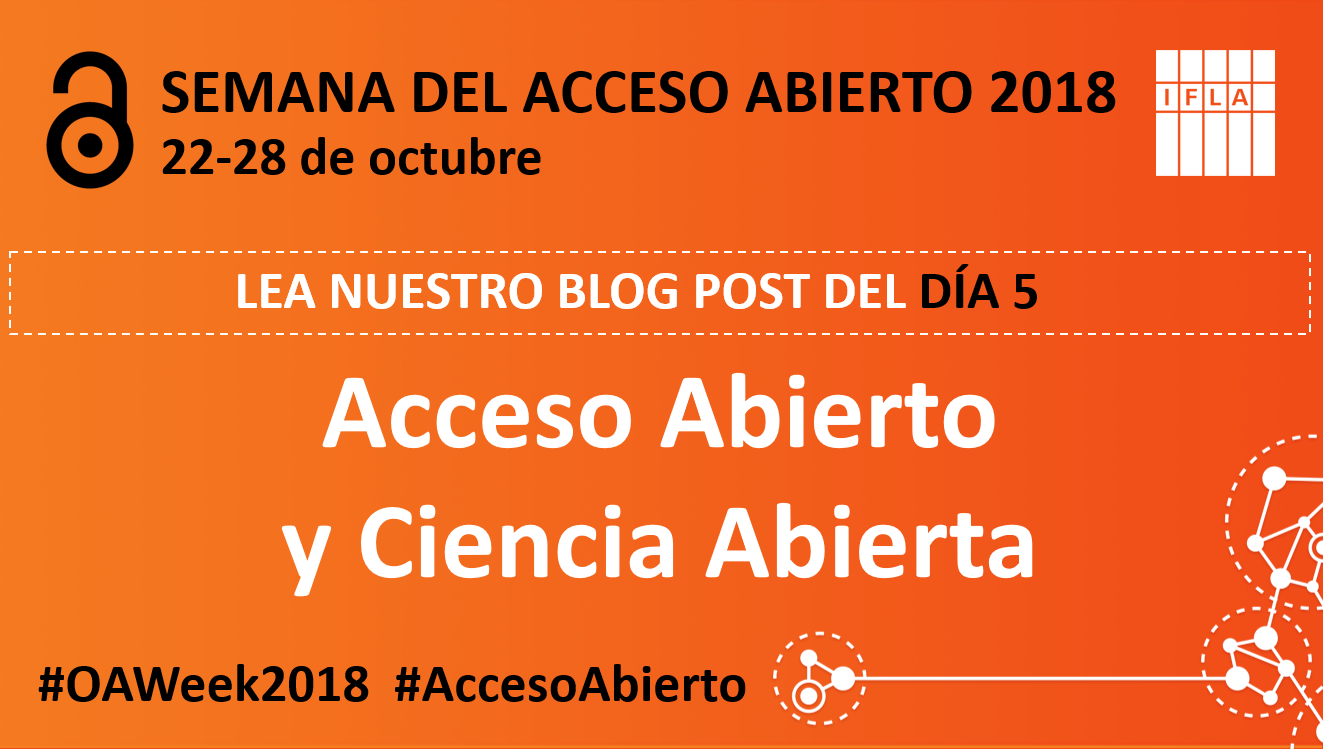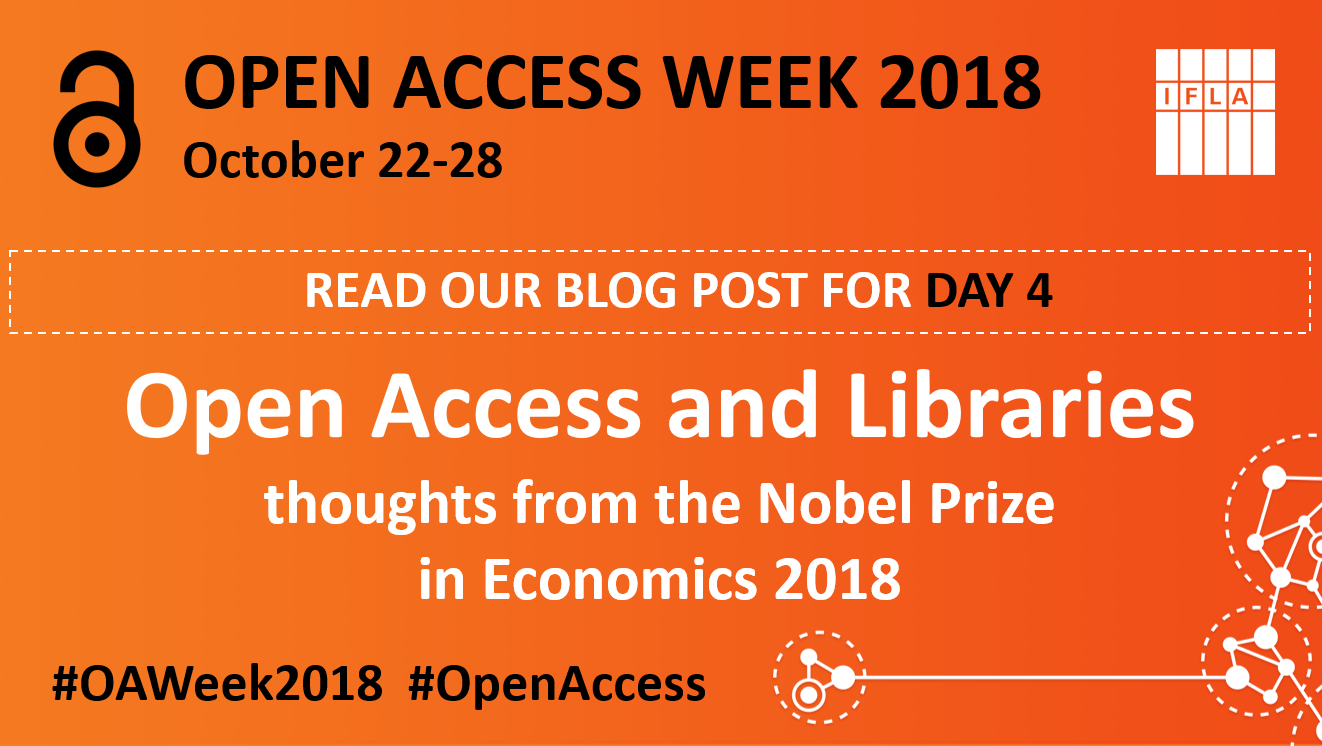
[la versión inglesa del post está disponible aquí]
Tener acceso a los resultados de investigación es un muy buen primer paso de un camino mucho más largo. Enmarcando al acceso abierto en su contexto general, se encuentra casi como el final de una cadena que deriva en la ruta verde (el auto archivo) y la ruta dorada (la publicación), pero vale la pena empezar a recorrer la cadena hacia atrás.
El panorama general
En este gráfico se puede entender la taxonomía de la ciencia abierta.
Junto con el acceso abierto se encuentran:
- Datos abiertos
- Ciencia abierta reproducible
- Evaluación abiertas
- Políticas abiertas
- Herramientas abiertas
Ofrecer acceso al “código fuente”
Una forma sencilla de interpretar este panorama general es la idea de ofrecer el código fuente. Entre los desarrolladores de software, un programa tiene dos partes: 1) su código fuente, que permite modificaciones y a su vez es el que genera 2) el ejecutable, que es el programa funcionando.
Si llevamos la idea de código fuente a los procesadores de texto, podría decirse que un documento en pdf es el ejecutable, el resultado de la escritura y su código fuente es el archivo en Word que lo generó. Quienes han intentado modificar un pdf sabrán que es mucho más sencillo modificarlo si tienes acceso al archivo en Word que lo produjo.
Es por esto que me gusta pensar que quien además de abrir el resultado de una investigación mediante el acceso abierto ofrece acceso al “código fuente” de su investigación es como el vecino que pone flores en su balcón: ayuda a embellecer su vecindario. Ayudará a que los investigadores de su campo del conocimiento tengan más para avanzar en sus investigaciones.
Otras formas de código fuente: los datos
Si la investigación tiene datos, es muy común ver artículos o libros con gráficos. Siguiendo la metáfora de abrir el código fuente para los datos, habría que dar acceso no sólo al gráfico bajo licencias abiertas, que serían los “ejecutables” en nuestro ejemplo del software. Las tablas con los datos, por ejemplo un archivo en Excel, sería el equivalente al código fuente.
Con ese archivo de datos no sólo podríamos generar el mismo gráfico que se encuentra en el artículo o libro publicado en acceso abierto. También tenemos la posibilidad de hacer otros gráficos basados en esos mismos datos, hacer análisis diferentes o incluso mezclar diferentes tipos de datos para obtener nuevos resultados.
Publicar los datos es un camino para empezar con los datos abiertos, otro componente de la ciencia abierta.
Las herramientas y la ciencia reproducible
En mis dos ejemplos pasados, en del archivo en pdf y su documento en Word y en el de un gráfico y los datos en Excel usé como ejemplo dos herramientas muy populares, pero que no son libres. Si bien nos hemos acostumbrado a usarlas por su popularidad, para emplearlas debemos pagar una licencia por su uso. La verdad es que hay múltiples opciones en el software libre.
Libre Office por ejemplo tiene Writer, que es el equivalente a Word y Calc que es el equivalente a Excel. Si aplicamos la metáfora de dar acceso al código fuente, pero esta vez sobre las herramientas el resultado es no sólo mencionar con qué herramienta se construyó el artículo publicado en abierto, sino permitir que cualquier persona pueda descargarse estas herramientas y usarlas.
De esta forma se está abarcando las herramientas abiertas y además la ciencia reproducible. Dar todas las condiciones para que otros repliquen tus experimentos y mediciones y que estos a su vez publiquen los resultados de sus investigaciones de la misma forma hace que la ciencia avance más rápido.
El papel de los bibliotecarios en la ciencia abierta
Uno de los principios del acceso abierto es el acceso a las publicaciones científicas sin barreras tecnológicas, legales o económicas. Si empezamos a expandir este principio a la ciencia abierta estamos promoviendo no sólo el acceso a la información, sino el desarrollo de capacidades informacionales. Si lo expandimos un poco más realmente lo que estamos defendiendo es el Derecho humano de acceso a la información y a la libertad de pensamiento sin barreras tecnológicas, legales o económicas.
Adicionalmente el apoyar la ciencia abierta asegura más y mejores oportunidades para garantizar la preservación digital: ¿Cuántos de nosotros podemos acceder a archivos digitales producidos en software que ya no está disponible en el mercado? Si apenas hace 20 años usábamos disquetes ¿Cómo podremos acceder en 20 años a la información producida hoy? ¿Tendremos la capacidad de acceder y reproducir estos documentos sin las barreras legales y económicas?
Este texto fue escrito en Ghostwriter usando markdown para exportarlo a html, el formato en el que seguramente estarás leyendo este artículo. El código fuente puede descargarse en este enlace y está obra está en dominio público desde su creación. Si bien no es un artículo científico, creo que los principios del acceso abierto y la ciencia abierta pueden aplicarse a otro tipo de información. Es mi manera de poner flores en mi balcón.
Extra: Mientras tanto, en Latinoamerica
En Panama (Octubre 22 a 24 – 2018), muchas personas de la sociedad civil estuvieron trabajando en la Declaración de Panamá sobre Ciencia Abierta y bibliotecarios de Colombia, Argentina y El Salvador estuvieron involucrados para promover no sólo el Acceso Abierto, sino la Ciencia Abierta. De pronto podrías replicar esto con tu asociación bibliotecaria.
![By Petr Knoth and Nancy Pontika [CC BY 3.0 (https://creativecommons.org/licenses/by/3.0)], via Wikimedia Commons](https://blogs.ifla.org/lpa/files/2018/10/Os_taxonomy-300x165.png)

